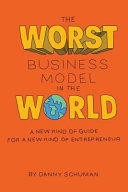

The book delves into the concept of business models, explaining that a business model is essentially the framework that outlines how a company creates, delivers, and captures value. The author emphasizes that many entrepreneurs fail to recognize the importance of a solid business model, often focusing solely on product development or marketing strategies. A well-defined business model should address key components such as customer segments, value propositions, channels, customer relationships, revenue streams, key resources, key activities, and key partnerships. By dissecting these elements, the author illustrates how entrepreneurs can build a robust foundation for their businesses, avoiding common pitfalls associated with inadequate planning. This understanding is crucial, as a weak business model can lead to failure, regardless of the product's quality or market demand.
Continue readingOne of the central themes of the book is the value proposition, which refers to the unique value that a product or service offers to its customers. The author argues that a compelling value proposition is critical for attracting and retaining customers. Entrepreneurs must clearly articulate what makes their offering different and why customers should choose them over competitors. The book provides examples of successful companies that have effectively communicated their value propositions and discusses the consequences of failing to do so. By focusing on the needs and desires of the target audience, businesses can tailor their offerings to meet customer expectations, leading to increased satisfaction and loyalty.
Continue readingThe author emphasizes the necessity of adopting a customer-centric approach in business. This involves understanding customers' needs, preferences, and pain points to create products and services that genuinely resonate with them. The book outlines various methods for gathering customer feedback, such as surveys, interviews, and market research. By actively engaging with customers, entrepreneurs can gain valuable insights that inform product development and marketing strategies. The author argues that businesses that prioritize customer relationships and satisfaction are more likely to succeed in the long run, as they can adapt to changing market conditions and build a loyal customer base.
Continue readingIn the pursuit of innovation, many entrepreneurs fall into the trap of over-engineering their products. The book discusses how this can lead to unnecessary complexity, increased costs, and prolonged development timelines. The author advocates for simplicity and efficiency, encouraging entrepreneurs to focus on delivering a minimum viable product (MVP) that meets core customer needs. By prioritizing essential features and functionalities, businesses can quickly launch their products, gather user feedback, and iterate based on real-world usage. This approach not only reduces the risk of failure but also allows for faster adaptation to market demands.
Continue readingThe author highlights the significance of metrics and analytics in evaluating business performance. Entrepreneurs must identify key performance indicators (KPIs) that align with their business goals and regularly track these metrics to assess progress. The book discusses various analytical tools and techniques that can provide insights into customer behavior, sales trends, and operational efficiency. By leveraging data, businesses can make informed decisions, optimize their strategies, and identify areas for improvement. The author warns against relying solely on gut feelings or anecdotal evidence, advocating for a data-driven approach to decision-making.
Continue readingAdaptability is presented as a crucial trait for entrepreneurs in an ever-changing business landscape. The book emphasizes that market conditions, customer preferences, and technological advancements are constantly evolving, and businesses must be willing to pivot in response to these changes. The author shares stories of companies that successfully adapted their business models or offerings to meet new demands, as well as those that failed to do so. By fostering a culture of innovation and flexibility, entrepreneurs can position themselves to seize new opportunities and mitigate risks associated with unforeseen challenges.
Continue readingThe final key idea revolves around the importance of learning from failure. The author argues that failure is an inevitable part of the entrepreneurial journey and should be viewed as an opportunity for growth and improvement. The book provides examples of well-known entrepreneurs who faced setbacks but ultimately used those experiences to refine their business models and strategies. By embracing a mindset of resilience and continuous learning, entrepreneurs can develop the skills and insights necessary to navigate the complexities of the business world and increase their chances of success.
Continue reading